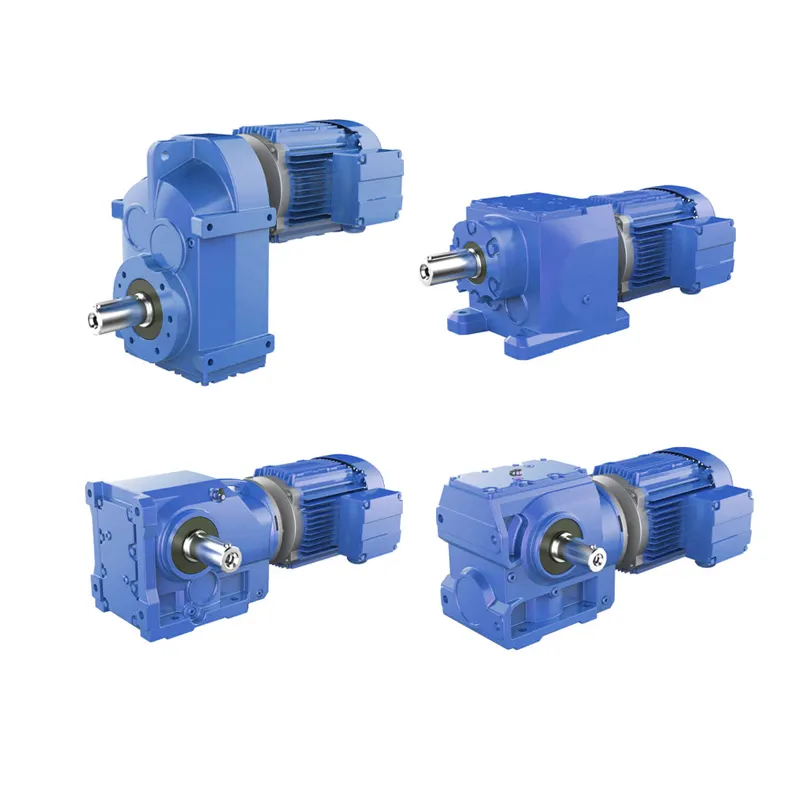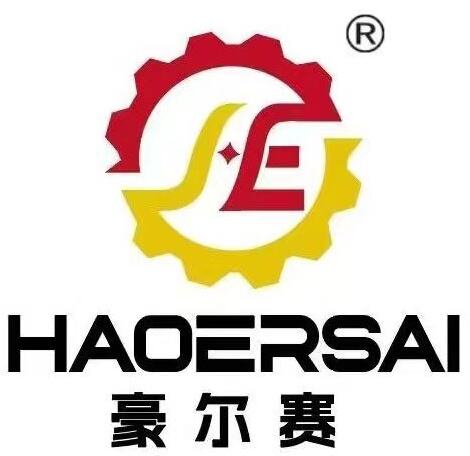Memahami Peran Penting Sistem Peredaman Gigi dalam Industri Modern
Pengurang kecepatan mewakili tulang punggung mesin industri, berfungsi sebagai komponen penting yang memungkinkan kontrol kecepatan dan penggandaan torsi secara presisi pada berbagai aplikasi. Keajaiban mekanis ini mengubah keluaran motor berkecepatan tinggi dengan torsi rendah menjadi daya berkecepatan lebih rendah namun dengan torsi lebih tinggi yang menggerakkan tak terhitung proses industri. Seiring dengan perkembangan manufaktur dan operasi industri, pentingnya peredam roda gigi dalam mengoptimalkan kinerja mekanis tidak dapat diremehkan.
Dalam lanskap industri yang semakin kompetitif saat ini, memilih peredam roda gigi yang tepat bisa menjadi penentu antara keunggulan operasional dan inefisiensi yang mahal. Perangkat-perangkat ini kini semakin canggih, menggunakan material mutakhir dan desain inovatif untuk memenuhi tuntutan mesin modern. Aplikasinya mencakup berbagai industri, dari manufaktur berat hingga sistem otomasi yang presisi.
Aplikasi Manufaktur dan Lini Produksi
Sistem Konveyor dan Penanganan Material
Sistem konveyor merupakan salah satu aplikasi peredam roda gigi yang paling luas digunakan di lingkungan manufaktur. Sistem-sistem ini memerlukan kontrol kecepatan yang presisi untuk menjaga kelancaran produksi dan mencegah kerusakan produk. Peredam roda gigi memastikan operasi yang lancar dengan mengubah output motor berkecepatan tinggi menjadi gerakan yang lebih lambat dan terkendali, yang diperlukan untuk penanganan material yang tepat.
Di gudang otomatis dan pusat distribusi, peredam roda gigi memainkan peran penting dalam menjaga kecepatan konveyor yang konsisten, sehingga mendukung operasi penyortiran dan pengemasan yang efisien. Kemampuan untuk menyesuaikan dan mempertahankan rasio kecepatan tertentu membuat peredam roda gigi sangat dibutuhkan dalam aplikasi ini, di mana ketepatan waktu dan koordinasi antar bagian konveyor yang berbeda sangat kritis.
Peralatan Lini Perakitan
Lini perakitan modern sangat bergantung pada peredam roda gigi untuk mengoordinasikan berbagai proses otomatis. Dari lengan robot hingga sistem posisi presisi, komponen-komponen ini memastikan gerakan yang akurat dan dapat diulang yang penting untuk produksi berkualitas. Pengendalian kecepatan presisi yang disediakan oleh peredam roda gigi memungkinkan operasi yang tersinkronisasi di berbagai stasiun, menjaga efisiensi produksi dan kualitas produk.
Industri otomotif, khususnya, menunjukkan versatilitas peredam roda gigi dalam operasi perakitan. Perangkat-perangkat ini menggerakkan segala sesuatu mulai dari sistem aplikasi cat hingga stasiun pengelasan otomatis, menyediakan torsi dan kontrol kecepatan yang diperlukan untuk proses manufaktur yang kompleks.

Aplikasi Industri Berat
Peralatan Penambangan dan Ekstraksi
Industri pertambangan bergantung pada peredam roda gigi yang kuat untuk menggerakkan peralatan berat seperti konveyor, mesin penghancur, dan mesin penyaring. Aplikasi ini menuntut kemampuan torsi tinggi dan daya tahan luar biasa untuk menghadapi operasi terus-menerus dalam kondisi ekstrem. Peredam roda gigi dalam aplikasi pertambangan harus mampu bertahan di lingkungan keras sambil tetap menjaga kinerja yang andal.
Operasi penambangan bawah tanah terutama mendapat manfaat dari peredam roda gigi dalam sistem ventilasi dan peralatan transportasi material. Kemampuan memberikan torsi tinggi pada kecepatan rendah membuat komponen-komponen ini sangat penting untuk memindahkan beban berat dan mengoperasikan mesin-mesin kritis di lingkungan yang menantang.
Pembuatan dan Pengolahan Baja
Pabrik baja menggunakan peredam roda gigi secara luas di pabrik laminating, mesin pengecoran kontinu, dan sistem penanganan material. Aplikasi-aplikasi ini memerlukan kontrol kecepatan yang presisi dan torsi tinggi untuk menjaga kualitas produk serta efisiensi operasional. Suhu ekstrem dan kondisi keras dalam proses manufaktur baja menuntut peredam roda gigi yang dirancang khusus dengan sistem pendinginan dan pelumasan yang ditingkatkan.
Pengolahan produk baja, termasuk pemotongan, pembentukan, dan proses finishing, bergantung pada peredam roda gigi untuk menyediakan transmisi daya yang terkendali. Komponen-komponen ini memastikan kualitas produk yang konsisten sambil menangani beban besar yang khas dalam operasi pengolahan baja.
Energi dan Pembangkitan Daya
Aplikasi Turbin Angin
Turbin angin modern merupakan salah satu aplikasi yang paling menuntut bagi peredam roda gigi. Sistem-sistem ini harus mengubah putaran relatif lambat dari bilah turbin angin menjadi kecepatan lebih tinggi yang sesuai untuk pembangkit listrik. Peredam roda gigi yang digunakan pada turbin angin harus tetap andal sambil beroperasi terus-menerus dalam kondisi cuaca dan beban yang bervariasi.
Keberhasilan proyek energi angin sering bergantung pada kinerja dan daya tahan sistem pereduksi girboksnya. Desain canggih yang menggabungkan beberapa tahap dan sistem pelumasan yang rumit membantu memastikan keandalan jangka panjang dalam aplikasi energi terbarukan yang kritis ini.
Sistem Tenaga Hidroelektrik
Fasilitas hidroelektrik menggunakan peredam roda gigi pada berbagai aplikasi, mulai dari mekanisme pengendalian pintu hingga sistem bantu. Komponen-komponen ini harus beroperasi secara andal di lingkungan yang sering terpapar air dan beban yang bervariasi. Kontrol presisi yang disediakan oleh peredam roda gigi memastikan operasi peralatan hidroelektrik yang efisien sekaligus menjaga stabilitas sistem.
Instalasi hidroelektrik modern kerap mengintegrasikan sistem peredam roda gigi canggih yang meningkatkan efisiensi operasional dan mengurangi kebutuhan pemeliharaan. Aplikasi-aplikasi ini menunjukkan fleksibilitas peredam roda gigi dalam mengelola berbagai kebutuhan transmisi daya dalam satu fasilitas yang sama.
Pertanyaan yang Sering Diajukan
Bagaimana peredam roda gigi meningkatkan efisiensi mesin industri?
Peredam roda gigi meningkatkan efisiensi mesin industri dengan mengoptimalkan hubungan kecepatan dan torsi, mengurangi konsumsi energi, serta memungkinkan kontrol operasi mekanis yang presisi. Peredam roda gigi juga memperpanjang masa pakai peralatan dengan mengelola beban secara efektif dan mengurangi keausan pada komponen sistem.
Faktor-faktor apa saja yang harus dipertimbangkan saat memilih peredam roda gigi untuk aplikasi industri?
Faktor-faktor utama dalam pemilihan meliputi rasio kecepatan yang dibutuhkan, kebutuhan torsi, kondisi lingkungan operasi, siklus kerja, aksesibilitas perawatan, dan keterbatasan ruang. Pertimbangan tambahan mencakup kapasitas termal, kebutuhan pelumasan, serta kompatibilitas dengan peralatan yang sudah ada.
Berapa lama umur peredam roda gigi industri secara umum?
Masa pakai peredam roda gigi industri bervariasi tergantung pada aplikasi, praktik perawatan, dan kondisi operasi. Dengan perawatan yang tepat dan pemilihan aplikasi yang sesuai, peredam roda gigi berkualitas dapat beroperasi secara andal selama 20 tahun atau lebih di lingkungan industri standar.

